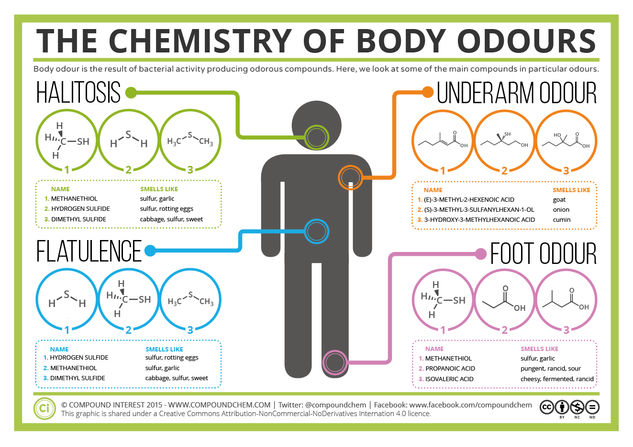© Compound InterestThe Chemistry of Body Odours – Sweat, Halitosis, Flatulence & Cheesy Feet
Halitosis
In the majority of cases, the cause of bad breath, or halitosis, is the product of bacteria in the mouth. These bacteria produce waste products, and it’s these chemical compounds that contribute towards halitosis.
- The phenomenon of ‘coffee breath’ has been linked by the Journal of Breath Research with the compound 3-mercapto-3-methylbutylformate.
- Garlic breath is attributed to allyl methyl sulfide, a product of the breakdown of garlic, which unsurprisingly has an odour described as garlic-like.
- Eating meat & fish can also lend your breath a formidable scent. The bacteria that produce VOCs thrive on proteins, and they can also produce other compounds.
Flatulence
Sulfur-containing organic compounds are again to blame for the variety of odours produced in the digestive system. The main sulfur-containing compound here is hydrogen sulfide, followed by methanethiol & dimethyl sulfide, all of which we’ve already met.
Underarm Odour
Your underarms are home to an estimated one million bacteria per square centimetre; these convert your otherwise odourless sweat into a variety of malodourous molecules.
Foot Odour
Again, sweat is a major player in foot odour – however, as with underarm odour, it’s due to the fact that it provides a beneficial environment for bacteria to grow, and it’s the compounds that these bacteria produce that cause the perceived odour.






